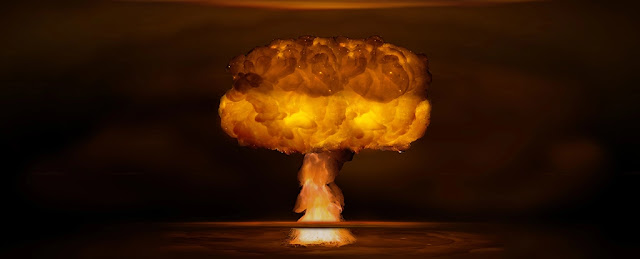A Nuclear War Could Starve Billions, But One Country May Be Safer Than The Rest
It all begins with a lone mushroom-shaped cloud that everyone had prayed would never appear again.
Tit-for-tat attacks are sparked by retaliation, each of which aims to put an end to this most recent War of All Wars, until, around a week later, Earth starts to tremble under a veil of smoke and dust.
Scenarios that map and estimate the destruction caused by a nuclear winter have existed since the Cold War dominated the evening news.
Years later, we have a far better understanding of the more subtle consequences of airborne particles on our crops. And the numbers are still depressing.
Six scenarios have been put up by a group of scientists from across the world using the most recent information on crop yields and fishery resources to approximate what food supplies may look like following a quickly intensifying nuclear battle between warring states.
The death rate from a caloric scarcity problem alone might exterminate the majority of the world's population, leaving aside the immediate attacks' casualties, which could number in the hundreds of millions.
The National Center for Atmospheric Research's Community Earth System Model was used to make predictions on how the addition of soot and dust stirred up by nuclear explosions may alter weather patterns.
Estimates of how changes in surface temperature, direct and diffuse light, and precipitation might affect agricultural and marine stock yields were then made using this information.
The outcomes weren't appealing. Consider a very moderate nuclear attack with 100 detonations, such as the one we would expect if tensions between India and Pakistan reach a breaking point.
5 million metric tons of particles would be released into the atmosphere, according to the researchers' estimations. For instance, the devastating wildfires in Australia at the end of 2019 and California in 2017 both released up to 1 million metric tons of carbon dioxide apiece.
Most of us would have 8 percent fewer calories available to us as a result, and up to 255 million people may die of starvation in the years that followed. Ironically, alterations to the way we eat ourselves could even encourage certain cultures to eat more, upping their intake by 5%.
Even for those looking to take advantage of the disarray, finding means to ration out food resources would become more difficult as the soot in the air increased due to the increased number of nuclear explosions.
A full-scale conflict that used up the thousands of bombs that the US and Russia had on hand would fill the atmosphere with 150 million metric tons of grit and dust, depriving the globe of three-quarters of its calories.
It would be a gradual hunger for 5 billion people across the world as they fight to find enough food to survive over the next two years if we put animal feed inventories into emergency stores and ate what we currently squander.
Where a people resides would determine their ease of access to food. In a scenario where 250 nuclear explosions release 27 million metric tons of material into the atmosphere, high latitudes in the Northern Hemisphere would see a loss in harvested calories of more than 50% and a decline in fishing reserves of between 20 and 30%.
The average reduction in calories would be less than 10% for countries closer to the equator.
Food commerce would very likely be disrupted, as seen in the conflict between Ukraine and Russia. Nations that rely on importing food would have to make swift adjustments.
This might not be as horrible as it seems for certain areas.
Australia's population could still obtain at least half of their calories from spring wheat without the aid of foreign commerce. Based on their simulations, the researchers concluded that the production of this crop may even slightly increase.
Australians would still need to make budget cuts, but perhaps the same number of casualties might be avoided. Similarly, New Zealand's food supply may be less affected than those of countries that depend on commodities like rice.
However, as the researchers point out, the ensuing sociopolitical unrest would surely convert very simple forecasts about food economics into a disorganized jumble.
The authors warn that if this hypothetical situation were to truly occur, "Australia and New Zealand would definitely experience an inflow of migrants from Asia and other nations facing food poverty."
There are still many unanswered questions on how mankind will fare after a nuclear war, even though the study improves earlier estimates with more precise data.
Future measures may make use of more accurate models with more crops or forecast how trade and economic systems will allocate goods.
Both managed and uncontrolled resources would be impacted by additional variables, such as ozone depletion and pollinator fatalities. By taking them into consideration, our mortality rate may increase even more.
Not that we'd ever want to know for sure how accurate we may be with our forecasts. For the time being, we can only hope that nuclear nation leaders will bear this hypothetical scenario in mind.
This research was published in Nature Food.




Comments
Post a Comment